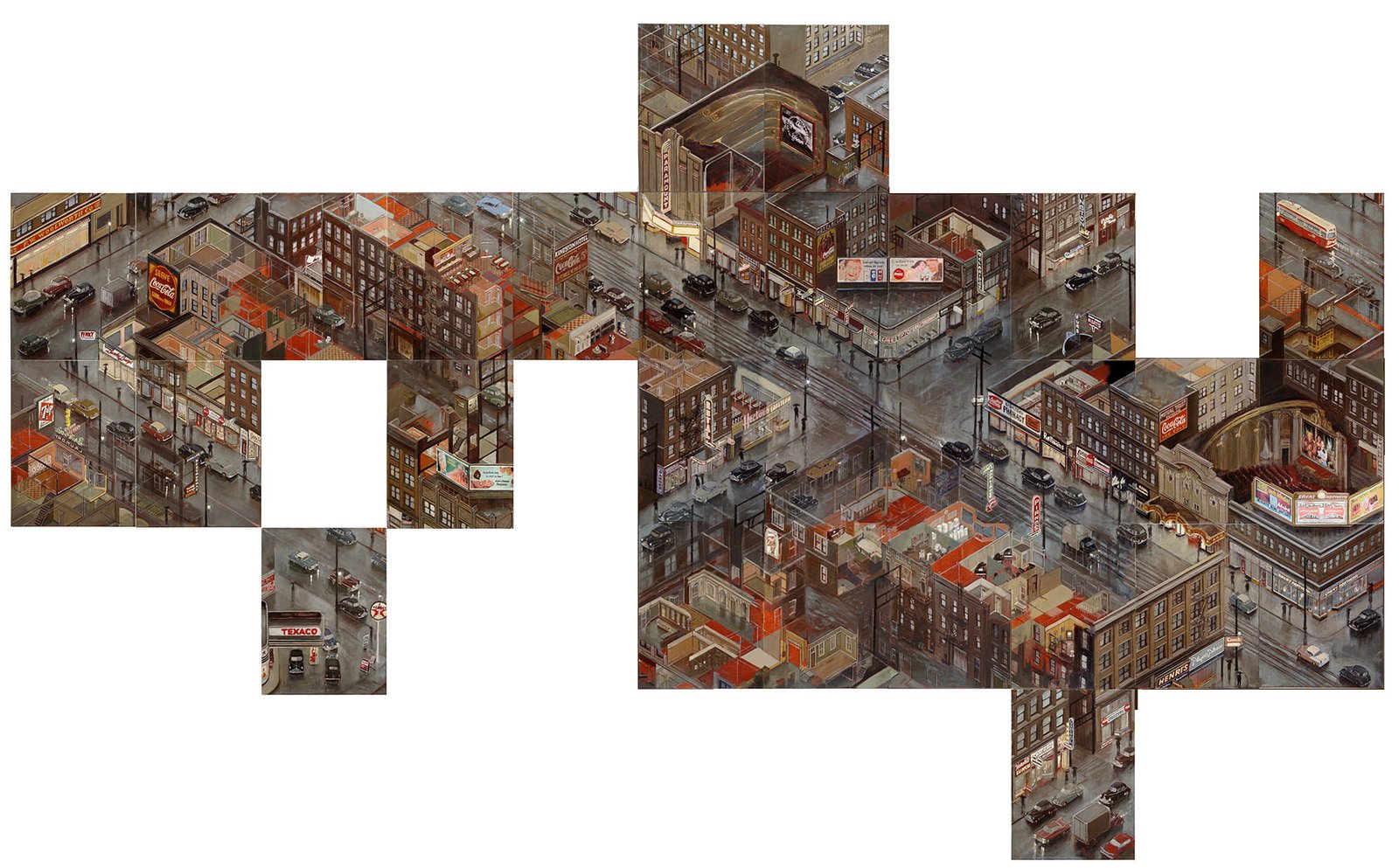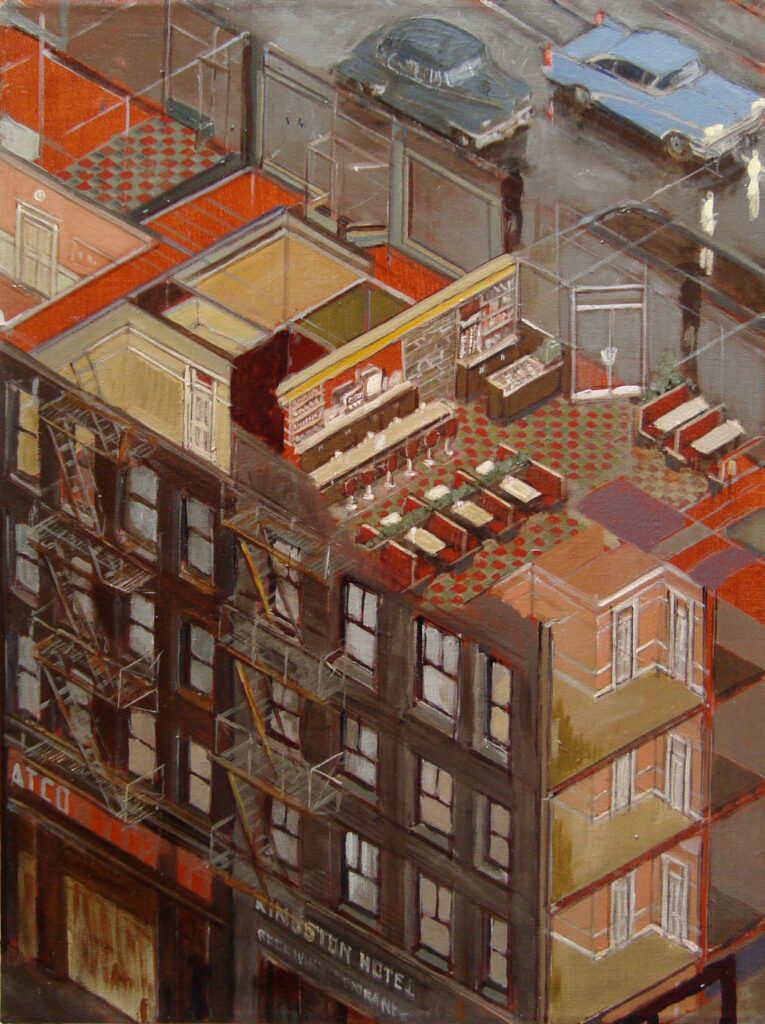an introduction to The Intersection project by artist Tom Carter
Intersection is a city laid out in an isometric grid on interchangeable panels.

Building it isometrically on 18”x24” panels allows the city to expand outwards in all directions endlessly (like a real community), and the interchangeability allows for different views of the same spot – different floors of a multi-storey building, different times of day, different years, allowing the building to be constructed, modified, torn down and replaced.
Being modular, different artists may interpret the city in their own way – and have their versions of it interlock and fit in with others. This is the same way we all come to a community with fresh eyes, accept or reject the way things are, and then set to work remaking it to suit ourselves. We can only be part of it if we follow the basic guides, but after that it’s open to interpretation.
The more artists that contribute, the stronger the entire structure becomes! It’s completely free to contribute and adopt the “city” as your own – all you have to do is make a commitment and add yourself to it. The community is always yours once you apply yourself to it. After enough commitment, you become part of it.
Intersection is meant to reside in individual collections, different cities, public spaces, galleries, in virtual design spaces for digital creators – the only place it’s complete is within an online environment that’s available freely for everyone to look at and be part of.
Who owns a city? Everybody who feels any sort of connection to a city owns it. Some spaces are privately held and secret – others, both publicly and privately owned, are shared by many. Everyone’s experience is different but connected…..Intersection is to embody this reality.
Any media is welcome – paint on canvas or panel, drawing, mixed media and collage, digital – as long as the basic proportions are adhered to so the city can be interacted with and interchanged….intersected. Historical “reality”, futuristic fantasy, all are valid. Communities are an amalgam of historic truths – architectural, cultural and sociological, dreams of the future, and dreams of what could have been.
It’s impossible to ruin it or break it apart – if pieces move away then replacements can be made (and should be made anyway) – the work of art is always replenishing and adapting. This is yet another way the project parallels real cities – if a version is gone, there’s always the memories of it and we’re left trying to rebuild it in a new way. All the different things that have happened on each spot become part of the tapestry and it’s all richer because of what else has happened. Again, this invites as much contribution from as many artists as possible – it’s impossible to dilute it, rather the more the stronger it becomes.
From a strictly art-commerce perspective (no pun intended), the more panels sold, the stronger the market for future panels and also the higher the market potential for the sold panels. Contributing artists are walking into a growing market and their very contribution actually enhances the viability of the project for themselves and all the other contributing artists! There are endless opportunities for marketing and collecting – some collectors might want all the different versions of a certain “location” for example (different artists’ interpretation of a certain theatre or restaurant, etc.) – some collectors may want to continue down a certain street and continue adding to it every year. Some collectors may want to start with more affordable panels (emerging artists) knowing that there’s a growing market and eventually they’ll be able to add the work of more established artists.
Ultimately I’d like a completely interactive digitized version of all panels in a virtual environment. There anyone can scroll through all the known versions of all panels at will, download templates, design their own contributions and upload if they want…
